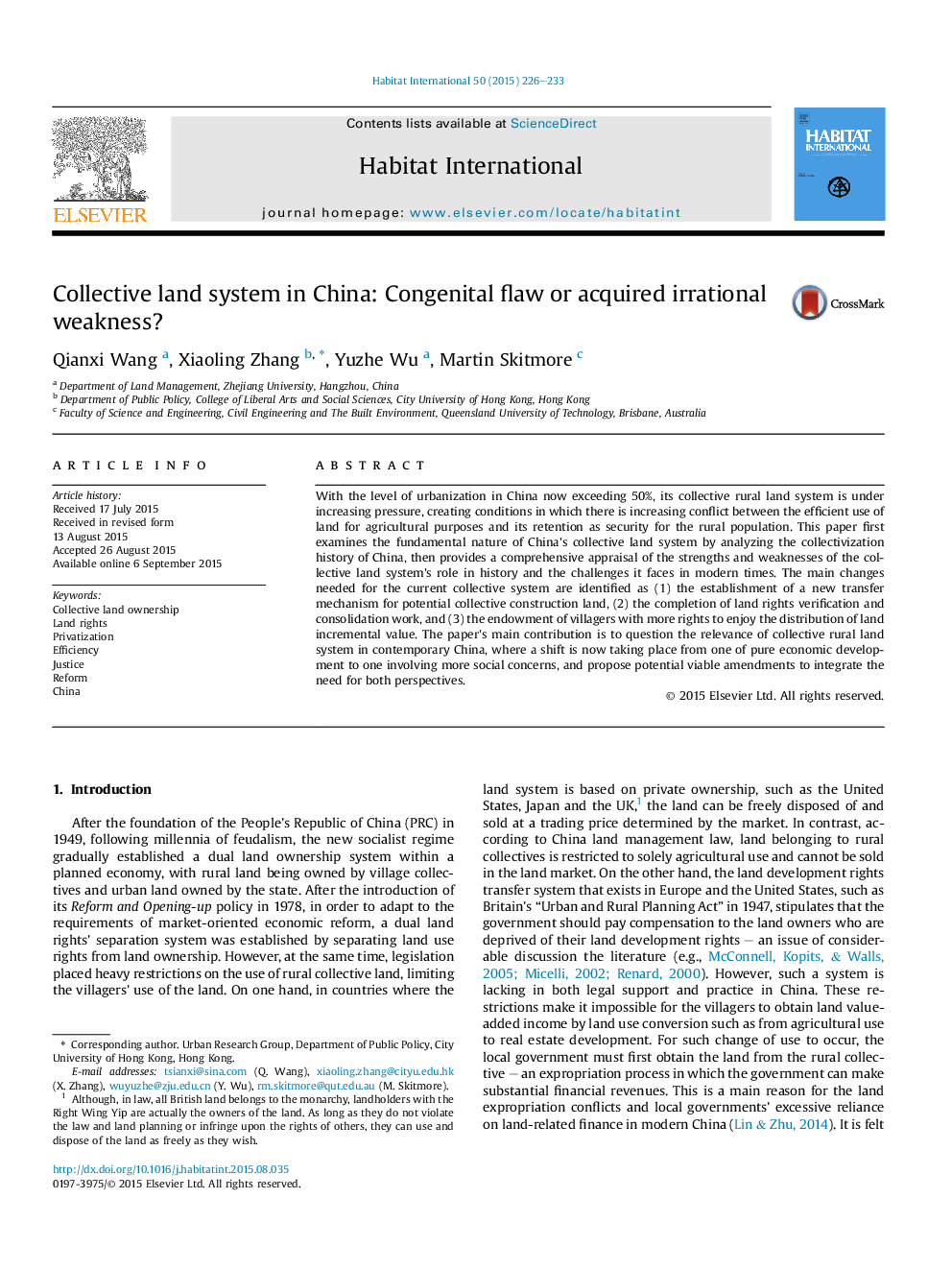| Article ID | Journal | Published Year | Pages | File Type |
|---|---|---|---|---|
| 7455937 | Habitat International | 2015 | 8 Pages |
Abstract
With the level of urbanization in China now exceeding 50%, its collective rural land system is under increasing pressure, creating conditions in which there is increasing conflict between the efficient use of land for agricultural purposes and its retention as security for the rural population. This paper first examines the fundamental nature of China's collective land system by analyzing the collectivization history of China, then provides a comprehensive appraisal of the strengths and weaknesses of the collective land system's role in history and the challenges it faces in modern times. The main changes needed for the current collective system are identified as (1) the establishment of a new transfer mechanism for potential collective construction land, (2) the completion of land rights verification and consolidation work, and (3) the endowment of villagers with more rights to enjoy the distribution of land incremental value. The paper's main contribution is to question the relevance of collective rural land system in contemporary China, where a shift is now taking place from one of pure economic development to one involving more social concerns, and propose potential viable amendments to integrate the need for both perspectives.
Related Topics
Social Sciences and Humanities
Social Sciences
Development
Authors
Qianxi Wang, Xiaoling Zhang, Yuzhe Wu, Martin Skitmore,
